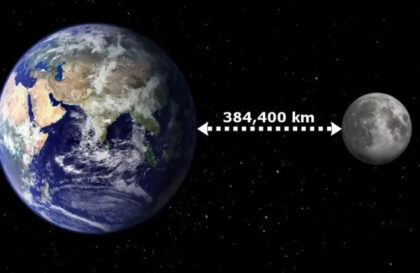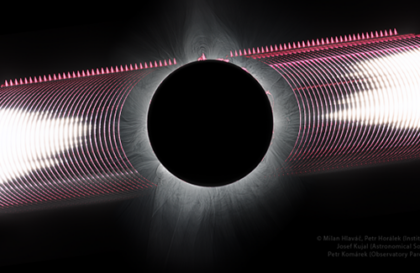Billions of years ago the Moon actually had an atmosphere. The ancient lunar atmosphere was thicker than the modern atmosphere of Mars and was likely capable of weathering rocks and causing hurricanes. Perhaps most importantly, it may be the source of some, if not all, of the water found on the Moon.
Looking at the Moon at night, Earth’s closest neighbor appears in shades of gray and white; a dry desert in the vacuum of space, dormant and dead for billions of years. It’s hard to believe that the Moon had or still has an atmosphere.
Research by NASA Marshall Space Flight Center planetary volcanologist Debra Needham in Huntsville, Alabama, and planetary scientist David Kring of the Lunar and Planetary Institute in Houston, Texas, suggests there was a thick atmosphere on the Moon.
The discovery of the composition of the lunar atmosphere began with the analysis of lava that erupted on the Moon between 3.9 and 1 billion years ago, forming lava plains on the lunar surface. Needham and Kring used laboratory analyzes of lunar basalts brought to Earth by the Apollo crews to estimate gases released during volcanic eruptions.
A time sequence of lunar mare — lava plain — flows in 0.5 billion year time increments, with red areas in each time step denoting the most recently erupted lavas. The timing of the eruptions, along with how much lava was erupted, helped scientists determine that the Moon once had an atmosphere and that the lunar atmosphere was thickest about 3.5 billion years ago.
NASA/MSFC/Debra Needham; Lunar and Planetary Science Institute/David Kring
Scientists estimate that the lunar atmosphere existed for a short time, about 70 million years, and consisted mainly of carbon monoxide, sulfur and water. With the decrease in volcanic activity, the release of gases also decreased. This atmosphere was either lost to space or absorbed by the lunar surface.
Researchers found that the eruptions released perhaps 3 times more water than the Chesapeake Bay. If even 0.1% of this erupted water ends up in the umbral regions of the Moon, that could account for all the water found there. Needham believes that internally generated volatiles may contribute to the formation of these potential resources in situ.
Understanding the origin of water helps scientists and mission planners determine its renewability. The first signs of water on the Moon appeared in 1994, when NASA’s Clementine discovered potential traces of ice formations at the Moon’s poles.
In 1998, the Lunar Prospector mission found evidence of hydrogen, but did not link it to water.
Ten years later in 2008, the LCROSS missions and NASA’s Lunar Reconnaissance Orbiter finally confirmed the presence of water on the Moon.
Studies of volcanic glass beads brought back from the Moon by the Apollo 15 and Apollo 17 crews also discovered water. These discoveries point to a past atmosphere of the Moon that was different from its current shell.
Banner image: Frank Rumpenhorst—DPA/AFP/Getty
Images Image credit:
https://time.com
https://www.nasa.gov






